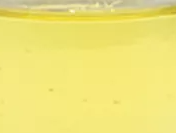Tea Tree oil (TTO), Melaleuca Alternifolia Tea Tree oil, is an essential oil steam-distilled from a plant that originates in Australia, Melaleuca alternifolia belonging to the Myrtaceae family.
It appears as a yellowish oily liquid.

It has been shown to be non-toxic, non-irritating and non-corrosive to humans only at the doses set by medical warnings (1).
Human health
TTO exhibits a wide spectrum of anti-bacterial, anti-viral, and anti-inflammatory activities. Its wide range of antimicrobial activity is mainly due to its diversity of components, especially its volatile constituents. The volatile compounds in TTO are mainly 1,8-cineole, terpinen-4-ol, and α-terpilenol (2).
In particular, 1,8-cineole has been shown to destroy the cell menbrane of E. coli, while terpinen-4-ol exhibits strong antibacterial, disinfection, and anti-corrosive effects. α-terpilenol has been demonstrated to feature suitable permeability and exhibits a killing effect on common pathogens such as Staphylococcus aureus, E. coli, pseudomonas aeruginosa, candida aibicans, etc.(3).
TTO is not harmful to the human body and has a suitable, natural anti-bacterial effect; thus, it may be used as an anti-bacterial agent in food.
Several studies have suggested the uses of TTO for the treatment of acne vulgaris, seborrheic dermatitis, and chronic gingivitis. It also accelerates the wound healing process and exhibits anti‐skin cancer activity (4).
Agriculture
Botrytis cinerea, one of the most destructive fungal pathogens, causing gray mold rot in a wide range of fresh fruits and vegetables. Although chemical fungicides are widely used to control the incidence of the disease, this practice potentially introduces harmful substances into the food chain, and also selects for B. cinerea strains with increased drug resistance. This study found that important metabolic pathways, including glycolysis, the TCA cycle, and purine metabolism, were compromised by TTO treatment, while Cytochrome c (a hemoglobin located in the inner mitochondrial membrane, and is responsible for transferring electrons between mitochondrial electron transport chain complexes) increased. We conclude that the disruption of energy metabolism by TTO contributes to its antifungal activity against B. cinerea (5).
The most relevant studies on this ingredient have been selected with a summary of their contents:
Melaleuca Alternifolia studies
CTypical commercial product characteristics Melaleuca Alternifolia Tea tree oil
| Appearance | Colorless to yellowish liquid |
| Boiling Point | 165°C 329°F |
| Flash Point | 63,88°C 147°F |
| Density | 0.878 g/mL at 25°C(lit.) |
| Refraction Index | 1.478 |
| Purity | HPLC>99.5% |
| Components: |
|
| terpineol-4 | ≥47% |
γ -terpinene
| 10%~28% |
a-terpinene
| 5%~13% |
a- terpineol
| 1.5%~8% |
| Terpinolene | 1.5%~5% |
| Eucalyptol | 0~13% |
| Storage | 2-8 °C |
- Molecular Formula C28H60O4P2S4Zn
- Molecular Weight 716.352 g/mol
- CAS: 68647-73-4
- EC Number: 232-293-8
- UNII VIF565UC2G
- DSSTox Substance ID DTXSID6028789 DTXSID60100611 DTXSID30874014
- IUPAC zinc;diheptoxy-sulfanylidene-sulfido-λ5-phosphane
- InChl=1S/2C14H31O2PS2.Zn/c2*1-3-5-7-9-11-13-15-17(18,19)16-14-12-10-8-6-4-2;/h2*3-14H2,1-2H3,(H,18,19);/q;;+2/p-2
- InChl Key ZKAQFYDDTYGBBV-UHFFFAOYSA-L
- SMILES CCCCCCCOP(=S)(OCCCCCCC)[S-].CCCCCCCOP(=S)(OCCCCCCC)[S-].[Zn+2]
- MDL number MFCD00132409
- PubChem Substance ID
- RTECS RJ3697600
- NCI C74295
- C74295 69627
- FEMA Number: 3902
Synonyms:
- Melaleuca alternifolia Oil
- Phosphorodithioic acid, O,O-di-C1-14-alkyl esters, zinc salts
- Oil, Melaleuca alternifolia
- TEA TREE OIL
- Oil, Tea Tree
- Tea Tree Oil
- Dialkyl(C1-C14)dithiophosphoric acid, zinc salt
- SCHEMBL164653
- zinc diheptoxy-sulfido-thioxo-$l^{5}-phosphane
- Zinc Dialkylphosphorodithiloate
- AN-38072
References__________________________________________________________________
(1) Hammer KA, Carson CF, Riley TV. In vitro activity of Melaleuca alternifolia (tea tree) oil against dermatophytes and other filamentous fungi. J Antimicrob Chemother. 2002 Aug;50(2):195-9. doi: 10.1093/jac/dkf112.
(2) Lin G, Chen H, Zhou H, Zhou X, Xu H. Preparation of Tea Tree Oil/Poly(styrene-butyl methacrylate) Microspheres with Sustained Release and Anti-Bacterial Properties. Materials (Basel). 2018 May 1;11(5):710. doi: 10.3390/ma11050710.
(3) Thomas J, Carson CF, Peterson GM, Walton SF, Hammer KA, Naunton M, Davey RC, Spelman T, Dettwiller P, Kyle G, Cooper GM, Baby KE. Therapeutic Potential of Tea Tree Oil for Scabies. Am J Trop Med Hyg. 2016 Feb;94(2):258-266. doi: 10.4269/ajtmh.14-0515.
(4) Pazyar N, Yaghoobi R, Bagherani N, Kazerouni A. A review of applications of tea tree oil in dermatology. Int J Dermatol. 2013 Jul;52(7):784-90. doi: 10.1111/j.1365-4632.2012.05654.x.
(5) Xu J, Shao X, Wei Y, Xu F, Wang H. iTRAQ Proteomic Analysis Reveals That Metabolic Pathways Involving Energy Metabolism Are Affected by Tea Tree Oil in Botrytis cinerea. Front Microbiol. 2017 Oct 12;8:1989. doi: 10.3389/fmicb.2017.01989.


![]() Tea Tree Oil
Tea Tree Oil